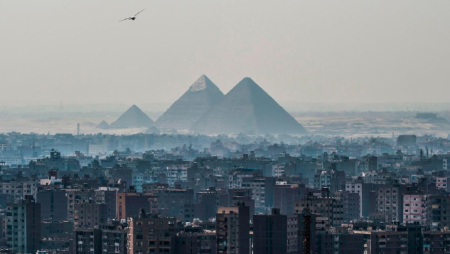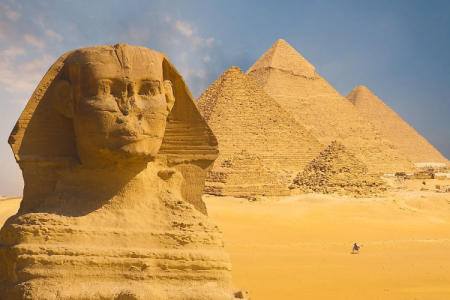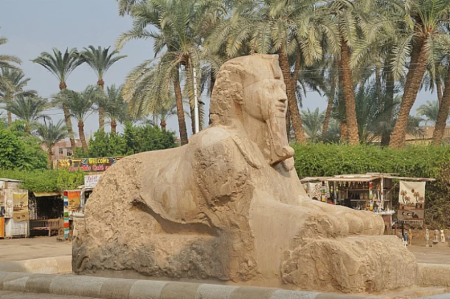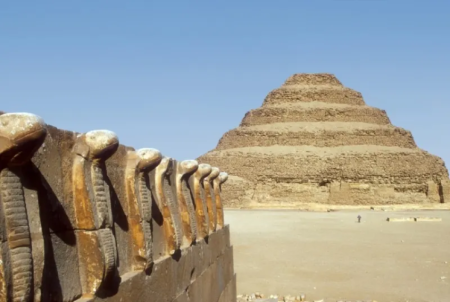Sakkara Necropolis

The Timeless Mystery and Grandeur of Sakkara Necropolis
Just south of Memphis Egypt, the old Egyptian capital, lies a site that captures the very essence of humanity’s earliest architectural genius — the Sakkara Necropolis. This vast burial ground, stretching across the desert sands, served as a sacred cemetery for royals, nobles, and high officials for over three millennia. Its monumental tombs, pyramids, and temples echo the birth of ancient Egyptian civilization. The Sakkara Necropolis isn’t just a museum of stone; it’s a living chronicle of art, architecture, and religion that shaped the ancient world. For travelers and historians alike, Sakkara’s allure lies not only in its age but in its unmatched legacy of innovation and symbolism.
Home to the world’s first pyramid — the Step Pyramid of Djoser — Sakkara carved a milestone in the story of human architecture. Designed by the genius Imhotep, this six-tiered structure revolutionized how the Egyptians conceptualized eternity and the afterlife. Surrounding it, corridors of mastabas, hidden chambers, and painted tombs reveal tales of devotion, artistry, and the pursuit of immortality. Today, walking through Sakkara feels like stepping into a time portal where the desert whispers the secrets of kings and priests who once ruled beneath the sun.
Exploring the Sakkara Necropolis offers more than just ancient grandeur. It opens a window into the evolution of burial practices, the rise of pharaonic power, and the ingenious artistry that predated the Great Pyramids of Giza. For those seeking to delve deep into Egypt’s glorious past, this UNESCO World Heritage site is an essential stop on any Egypt Travel Packages itinerary. Let’s unravel the magic, mystery, and majesty of Sakkara Necropolis — the eternal city of the dead that defined life for the living.
The Historical Significance of Sakkara Necropolis
Sakkara Necropolis stands as an enduring testament to Egypt’s Old Kingdom. It served as the principal burial ground for Memphis, the first capital of unified Egypt, and became a prototype for later royal cemeteries. The site spans an incredible timeline from the Early Dynastic Period (around 3100 BCE) to the Late Period, encompassing the evolution of Egyptian funerary customs. What makes Sakkara particularly captivating is how it bridges the transition from simple mud-brick tombs to magnificent stone pyramids that would forever redefine ancient architecture.
The Step Pyramid of King Djoser remains its crown jewel. Constructed during the Third Dynasty, it represents the earliest colossal stone building known to mankind. The architectural genius Imhotep, revered as a deity of wisdom and healing, masterminded this marvel, introducing monumental stone masonry to Egyptian culture. His creation not only revolutionized engineering but also symbolized a stairway for the pharaoh to ascend to the heavens. For visitors exploring Cairo Day Tours, Sakkara provides a breathtaking glimpse into Egypt’s architectural awakening.
The Step Pyramid of Djoser: The World’s First Pyramid
The Step Pyramid dominates Sakkara’s skyline with its tiered silhouette. Rising about 60 meters tall, it began as a traditional mastaba before being expanded into six ascending layers. Its limestone casing once gleamed in the desert sun, symbolizing eternal life. Beneath the pyramid lies a labyrinth of tunnels and chambers extending nearly six kilometers, housing offerings, mummified remains, and intricate blue faience tiles depicting the afterlife’s rituals. This innovation laid the groundwork for the grand pyramids that followed in Giza and Dahshour.
Visitors walking through the complex encounter the majestic colonnaded entrance, courts, and shrines that once bustled with priests performing sacred ceremonies. Each wall tells a story — scenes of abundance, celestial ascension, and divine protection. It’s here that the concept of eternal kingship was immortalized in stone.
The Tombs of Nobles: Art and Afterlife
Beyond the pyramids, Sakkara shelters a treasure trove of tombs belonging to nobles, priests, and officials. Among the most exquisite are the tombs of Mereruka, Kagemni, and Ti — masterpieces of Old Kingdom art. Their walls burst with scenes of daily life: fishing, hunting, banqueting, and even music-making. These depictions serve as both historical records and expressions of the Egyptians’ belief that life continues in the afterworld. The colors, remarkably preserved after thousands of years, still glow with vitality, giving visitors a vivid encounter with ancient creativity.
For art enthusiasts, these tombs are a must-see, rivaling collections found in the Egyptian Museum of Cairo. Their intricate carvings demonstrate advanced techniques and a deep understanding of visual storytelling long before written history became mainstream.
The Serapeum of Sakkara: Guardians of the Sacred Bulls
Another intriguing site within Sakkara Necropolis is the Serapeum — a subterranean complex dedicated to the Apis bulls, sacred animals of the god Ptah. Massive granite sarcophagi weighing over 60 tons each once contained mummified bulls, revered as incarnations of divine power. The Serapeum reflects the Egyptians’ complex theology and their intricate rituals of mummification. Its dark, echoing corridors leave visitors awestruck by the scale and precision of ancient craftsmanship. The reverence for animals here resonates with the spiritual depth found in temples across Luxor City and beyond.
Imhotep’s Legacy: Architecture Meets Divinity
Imhotep, the mastermind behind the Step Pyramid, later gained divine status in Egyptian culture. He became the god of wisdom, medicine, and architecture — a rare honor for a mortal. His vision at Sakkara revolutionized how Egyptians perceived eternity. By replacing mud-brick with limestone, he established a foundation for the monumental style that would dominate Egyptian architecture for millennia. The Karnak Temple and other New Kingdom wonders owe much to the genius first demonstrated in Sakkara’s desert plateau.
Rediscovery and Modern Excavations
Sakkara’s treasures remained buried under shifting sands until archaeologists began their systematic excavations in the 19th century. Since then, the site has continued to surprise the world with stunning finds — from colorful coffins to sealed tombs untouched for over 4,000 years. Each discovery deepens our understanding of Egyptian belief systems, artistry, and social hierarchies. Recent excavations revealed dozens of mummies, statues, and funerary masks, proving that Sakkara’s legacy still thrives beneath its dunes. For those interested in archaeology, this site rivals even The Valley of the Kings in importance.
Visiting Sakkara Necropolis Today
Modern visitors find Sakkara both hauntingly beautiful and educational. It’s accessible from Cairo city, making it a perfect day trip destination. Walking through its sands, one can sense the pulse of an ancient civilization striving for immortality. Local guides bring history to life, explaining the symbolism behind each relief and the architectural evolution that unfolded over centuries. Combining a visit to Sakkara with stops at The Grand Egyptian Museum enriches the experience, offering a comprehensive look into Egypt’s glorious heritage.
Travel Tips and Best Time to Visit
The best time to explore Sakkara is between October and April, when temperatures are mild and the desert breeze offers comfort during exploration. Comfortable shoes, water, and sun protection are essential. Visitors often combine their visit with Egypt Nile Cruises or Egypt Luxury Tours to enjoy a blend of ancient discovery and modern comfort. For those drawn to Egypt’s mysteries, Sakkara is not just a destination but an awakening — a journey through time and soul.
Preserving Sakkara for Future Generations
Preservation efforts at Sakkara Necropolis remain a global priority. Archaeologists and conservationists work relentlessly to stabilize ancient structures, protect wall paintings, and ensure that modern tourism doesn’t erode the fragile environment. The Egyptian government, with international collaboration, continues to restore and open new tombs to the public, allowing visitors to experience the grandeur responsibly. Each stone, each carving, and each relic represents humanity’s oldest dream — the quest for eternal life.
Frequently Asked Questions About Sakkara Necropolis
1. What is Sakkara Necropolis famous for?
Sakkara Necropolis is best known as the burial site of ancient Egyptian royalty and officials. It’s home to the Step Pyramid of Djoser, the world’s first pyramid and the foundation of later monumental architecture in Egypt.
2. How old is the Sakkara Necropolis?
The site dates back to around 3100 BCE, during Egypt’s Early Dynastic Period. It remained in use for over 3,000 years, covering numerous dynasties and reflecting the evolution of Egyptian funerary traditions.
3. Can visitors enter the Step Pyramid?
Yes, after extensive restoration, the Step Pyramid was reopened to visitors. Tourists can now descend into its inner corridors and explore chambers that once housed royal offerings and burial treasures.
4. How can I reach Sakkara from Cairo?
Sakkara lies about 30 kilometers south of Cairo. Visitors can book guided tours through agencies offering Egypt Excursions or private transport to explore the site comfortably in a single day.
5. What other attractions are near Sakkara?
Besides Sakkara, travelers can visit the nearby ruins of Memphis and the Red and Bent Pyramids in Dahshour. Combining these sites offers an incredible insight into ancient Egyptian history before embarking on Egypt Vacations Packages across the country.











